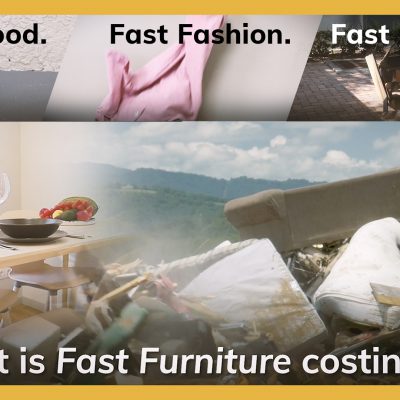What is fast furniture? Well, it really doesn’t refer to the use of furniture. In fact, it’s more of a descriptor of quality than anything. Simply put, fast furniture is a term used to correlate a certain type of furniture with a similar class of food and fashion.
The Fast Life in America
Here in America, we like to live fast. Being busy is almost a badge of honor. It means accomplishments, success, and hustle. So it’s no surprise that the fast-food industry emerged here in America. Suddenly, a ready-to-eat meal was available at a moment’s notice. Order your food and it’s ready for you right away. And along with that came convenience, enjoyment, and a new way of life. But not everything about it was good. What did you think when I said fast food? You may have had some positive memories, but more than likely you also considered the negative connotations associated with fast food: messy, unhealthy, and the guilt that comes after the meal. Well, America didn’t stop with food. Fast fashion, likewise, turned clothes into a throwaway commodity. Purchased, worn for a season or an occasion, and tossed.
What happened to furniture quality?
That’s where we arrive at furniture. Tables, chairs, and bed frames used to be made to last for years. Decades, even. Sure, some pieces have always been designed better than others. Certain shops were more skilled at construction than others. But when nearly everything was made with solid wood and cotton upholstery, the materials were always pretty similar. But with technological advances, we arrived at cheap manufactured products. Manufactured wood, plastic laminates, polyester fabrics. Suddenly, furniture is designed for affordability rather than quality. And over the last few decades, low-quality has supplanted long-lasting as the choice of consumers.
What makes furniture fast?
What makes it “fast” furniture? First of all, this low-quality furniture is similar to fast food and fast fashion: poor ingredients/materials, a hurried construction process, employees and manufacturers who aren’t paid a good wage or treated fairly, and, ultimately, a culture of cutting corners to cheapen the product. Home furnishings are simply the newest product line to make the shift to become “fast.” Americans are buying more and more of these historically-solid-wood products from big box stores, online retailers, and department stores that come in boxes requiring assembly. When the piece arrives in a box at your doorstep via 2-day shipping, built as small and lightweight as possible, you can be sure that is fast furniture.
About the coffee table
In this video, Beth shows off a coffee table–a “fast furniture” coffee table. This coffee table was found in a dumpster after being thrown away…and it is only two years old. Just over two years after manufacturing, the coffee table’s joints are coming loose. The surface laminate is bubbling and the backing cardboard is warping. The coffee table rocks back-and-forth. It looks like trash. Frankly, it is trash. But this shouldn’t happen to a coffee table for a couple of decades! Why has it happened in just two years with this piece? Join Beth to look at some of the signs of fast furniture and consider some options that might be better for the customer, the builders, and the world.
Slow furniture
Thankfully, this fast revolution hasn’t overtaken all of the traditional shops yet. We’ve seen a rejection of fast food and fast fashion: the slow movement. And the same thing is happening with furniture: the slow furniture movement. Learn more about it here on DutchCrafters.





